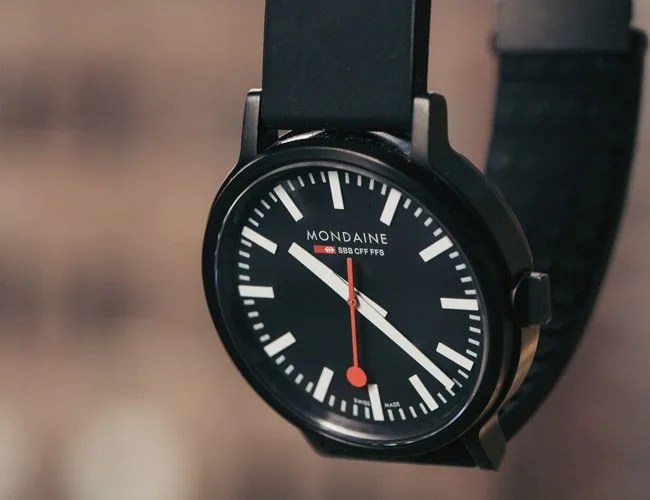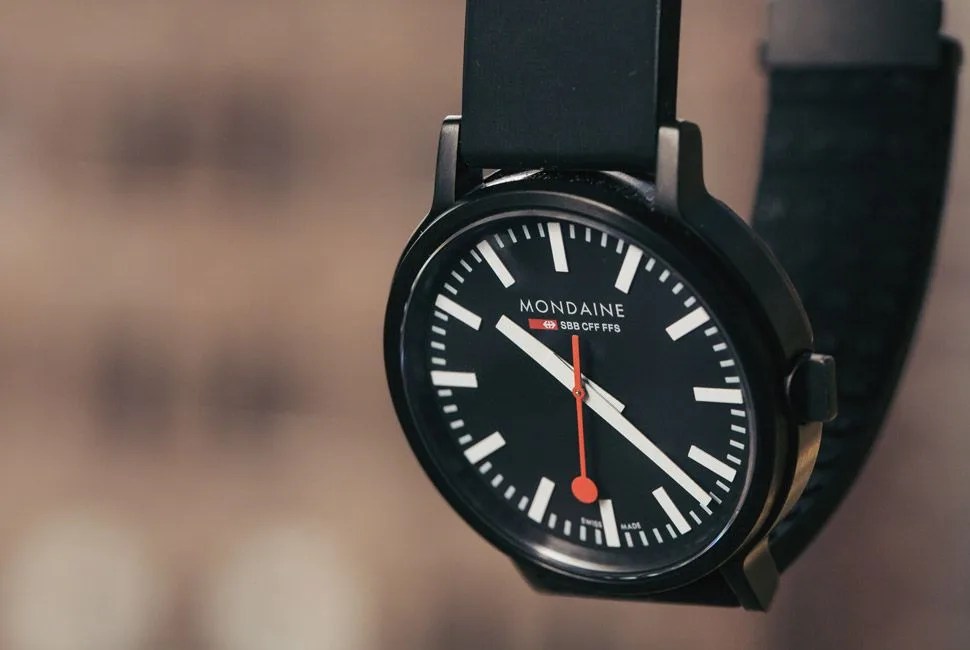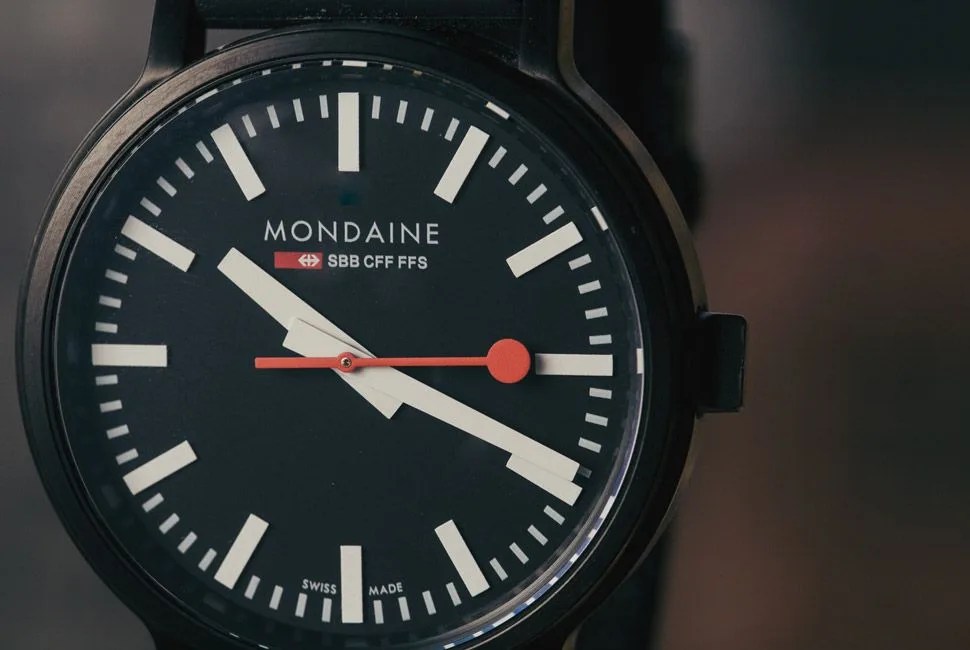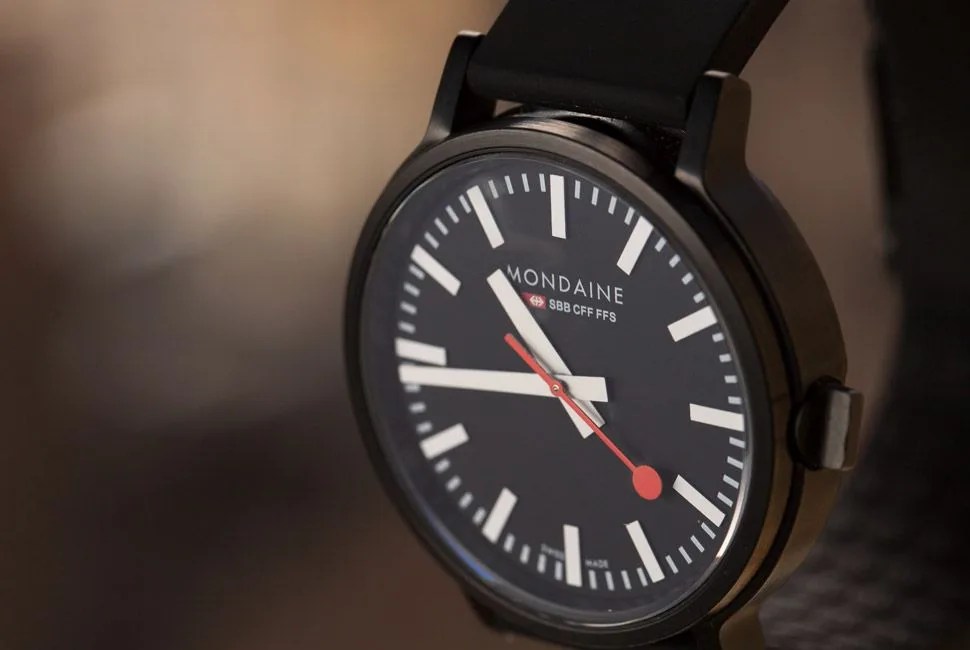5 photos
There’s something about a watch you could actually buy with your current bank account, right now, that gets the heart thumping and the synapses firing. These watches — specifically, the ones that cost less than $1,000, many of them less than $500 — are the subject of our new series “Time Is Money“.
There are a couple of things that sober up a man. A grievous insult to one’s woman in a bar does it; cold night air is surprisingly effective; some swear by a black cup of coffee. And breaking something expensive will do it too, melt the slight warmth of the cheeks into a chilly sweat that dews the brow. I felt that recently, when I did something to mess up a Mondaine Stop2Go ($725) I’d been lent for testing.
The Stop2Go is a true revisiting of the original muse of Mondaine’s watches, which is, without any argument, putting the famous design of Swiss Railway clocks on the wrist. Those have been around in chilly rail stations since 1944; in 1953 their bulbous red seconds hand was introduced, inspired by a railway guard’s signaling disc. This seconds hand had a peculiar feature: it ran around the dial’s 60 seconds in only 58 seconds. Then it paused for the final two seconds before starting up again as the minute hand ticked over to the next minute marker simultaneously. The idea was that all the clocks could tick over the minute synchronized for the ultimate in precision and efficiency (you know how those Europeans are about their public transport). Mondaine has had the rights to make miniature versions of these Swiss Railway clocks since 1986; but the Stop2Go, a quartz watch, is the first one since 2001 to imitate this 58-seconds-then-pause quirk.
This was the feature I was fiddling with when I lost my cool. The watch’s crown is unconventional, a flattened “rocker” that can be pressed in easily but pulled out only through sticking a fingernail into a small slot on the backside of the watch. Attempting to change the time, I made the bulbous second-hand spin around the face several times in quick succession. Cool.
Then the namesake “Stop2Go” pause was suddenly happening at 13 seconds rather than 0 seconds, at the 12:00 mark. I couldn’t make it go back. My palms became clammy.
Turns out it’s an extremely simple fix, detailed clearly in the owner’s manual. (I didn’t get one with my tester, hence my increased anxiety.) In fact, all of the odd crown’s functions are very easy and logical — they’re just a bit unsettling because they’re so unlike any other watch.





